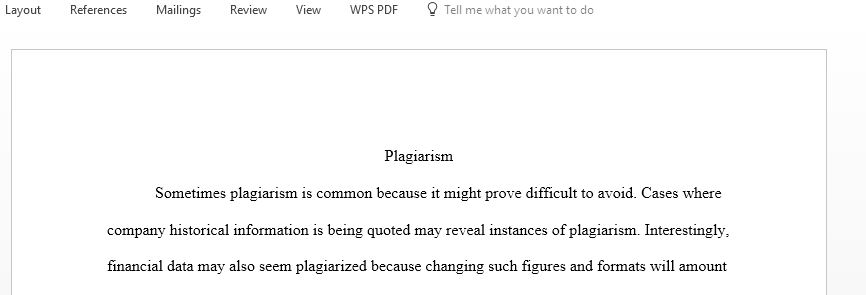An excerpt from an article called “Plagiarism Doesn’t Bother Me” by Professor Gerald Nelms
Here is an excerpt from an article called “Plagiarism Doesn’t Bother Me” by Professor Gerald Nelms. In some “real-world” contexts, plagiarism is not only acceptable but is expected. Brian Martin calls this “institutionalized plagiarism.” Plagiarism is as tied to context as every other aspect of language use. In our everyday conversations—and lectures and classroom discussions—we frequently give information without citing its source(s). Moreover, there exist contexts where plagiarism is not only acceptable but is expected and encouraged. Audience expectations and intellectual property conventions of the community in which the language use occurs determines whether adopting source material and expression without citation is acceptable or not. “Institutional plagiarism” frequently occurs and is accepted without even the lifting of an eyebrow in most daily business communications and in other bureaucratic contexts. For example, if a company employee were to try to compose a quarterly report with original language and organization, her supervisor would probably take her aside and explain that to be more efficient, she should simply adopt the organization and language of past quarterly reports.
Some might argue that “institutionalized plagiarism” is acceptable because the language and forms being plagiarized are “common knowledge.” That may be the case in some instances of institutionalized plagiarism but not in every case. Too often, we decontextualize common knowledge, thinking of it as facts every child learns in school or as information that exists in at least five (or whatever number of) credible sources, as some textbooks have defined it. In fact, content alone does not define knowledge as “common.” Common knowledge is that which is presumed to be ubiquitous or, at least, widespread within a specific community—that is, in context. Not all institutionalized plagiarism fits that bill.
Consider, for example, the annual reports that a company will publish and distribute to its investors and creditors and auditors and public officials and anyone else who might be interested. Annual reports are notoriously templated. They follow the same organizational structure every year. They almost invariably use a similar vocabulary, the same phrases, the same sentences in many instances. Yet, no one accuses the authors, often anonymous or named in the fine print, of plagiarism. No investors divest themselves of holdings in a company because its annual report is institutionally plagiarized.
This excerpt uses two common examples of business writing in discussing ways in which information is plagiarized – or not – depending, perhaps upon the view of those in a particular business setting. There are two worthwhile questions to consider concerning what Nelms tells us about these seemingly plagiarizing practices of business/professional writing. In a short paragraph, respond to the following:
1) Based on your experience, have you seen such practices in your work? Give an example. Why do you think this practice is rather common in business/professional writing?
2) Where do you think the practice of using the same format, even the same language, for business documents might have come from? Can you think of any examples of when you have noticed the use of what is sometimes called “boilerplate” documents and language?
Answer preview for An excerpt from an article called “Plagiarism Doesn’t Bother Me” by Professor Gerald Nelms
Access the full answer containing 218 words by clicking the below purchase button

